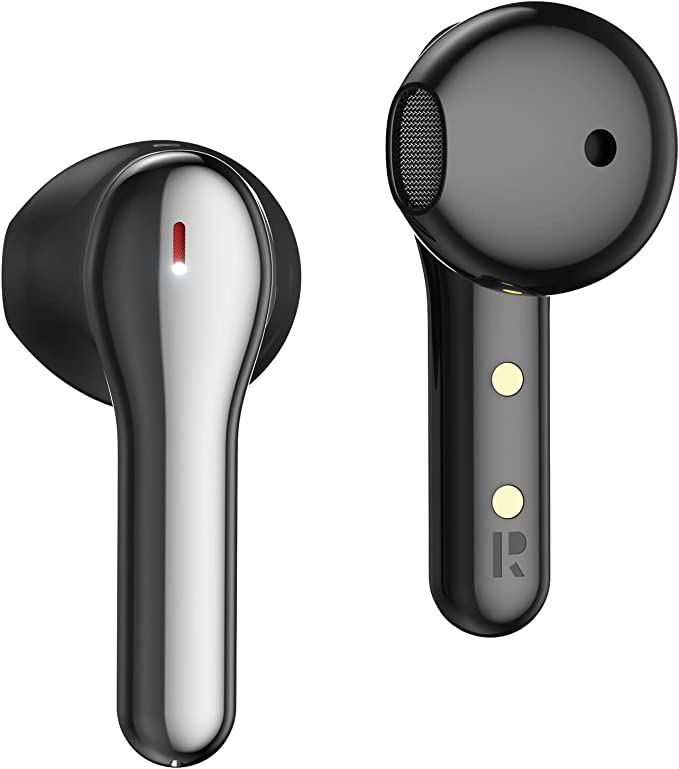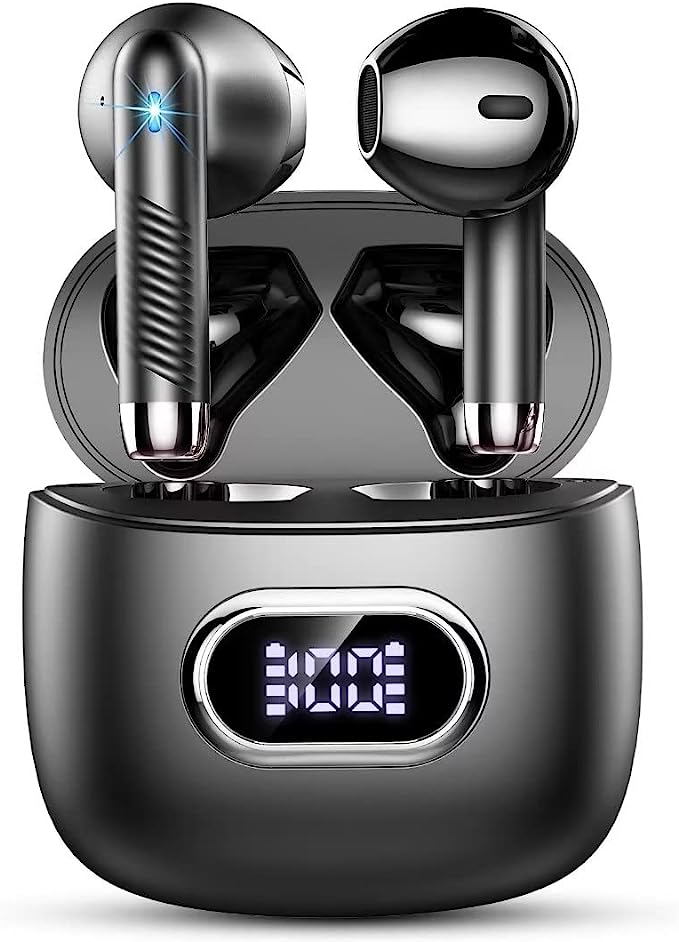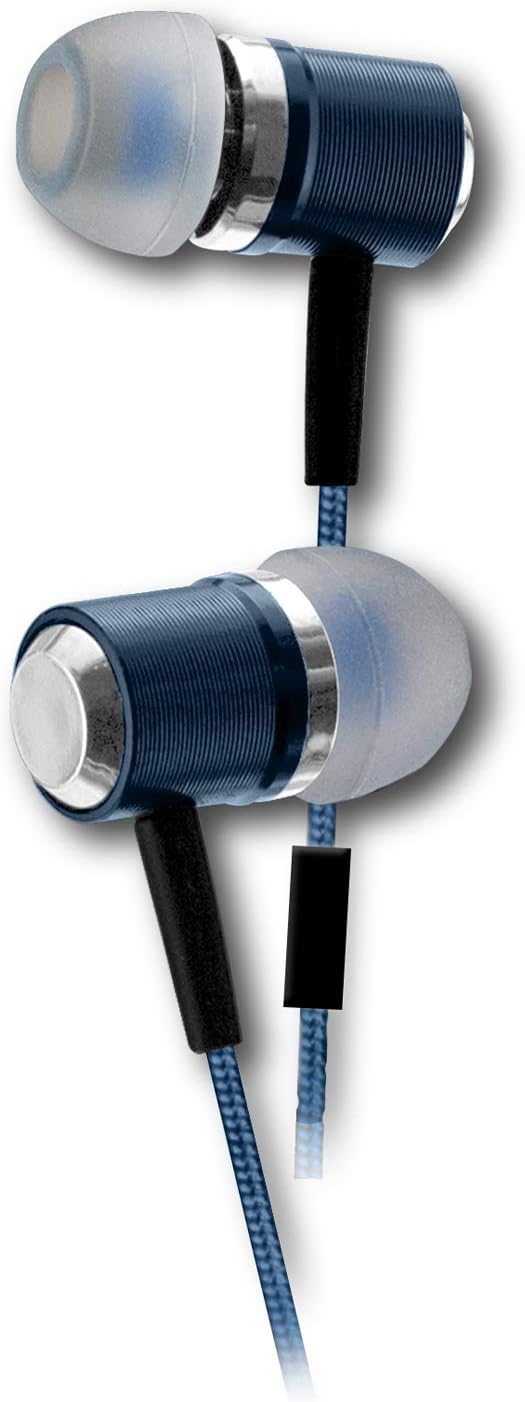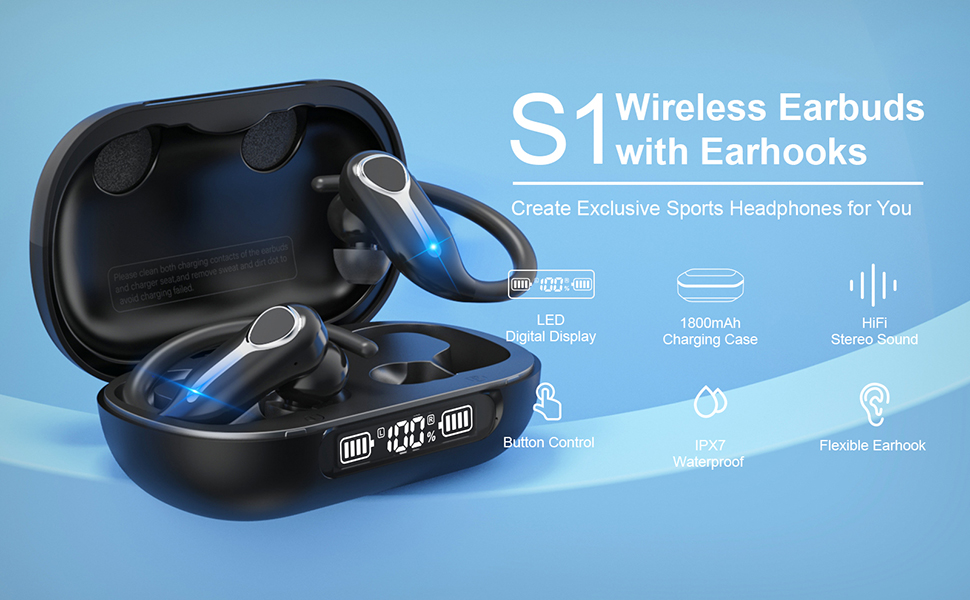UMIDIGI AirBuds U Wireless Earbuds – Superior Stereo Sound and Smart Touch Control
Update on June 30, 2025, 4:07 p.m.
In the digital aisles of online marketplaces, some products feel like a dare. A $20 price tag on a pair of true wireless earbuds, like the UMIDIGI AirBuds U, doesn’t just invite curiosity; it invites suspicion. The gut reaction for any seasoned tech observer is to assume a fatal flaw, a corner cut too deep. Is it a bargain, or is it just… bad? The answer, it turns out, is far more interesting. It’s a story not about what was left out, but about the incredible cleverness of what was put in, unlocked by the accidental discovery of one observant user.
This isn’t a review. It’s an engineering teardown using words. And our story begins, as many great discoveries do, with a simple problem.

The Accidental Experiment
On a product review page, amidst the usual feedback, a user named ‘arubamon’ shared a fascinating journey. After receiving their AirBuds U, they were initially underwhelmed. The sound was clear, but the bass—the satisfying, deep thrum that gives music its foundation—was missing in action. But then, they did something unusual. As they wrote in their review:
“After reading Larry E.’s review… I tried wearing them ‘upside down’ like he describes, and the bass is now superb! The headphones are also much more comfortable to me… I am now updating my rating from 4/5 to 5/5 stars.”
This isn’t just a quirky tip. This is a perfect, real-world demonstration of a fundamental principle in acoustics: the “acoustic seal.” Think of it like this: trying to feel the deep boom of a bass drum from across a field is difficult because the sound waves dissipate in the open air. But if you’re in a small, sealed room with that same drum, the sound is powerful and immersive. Your ear canal works the same way. For you to perceive rich, low-frequency sounds, the earbud needs to form a relatively tight seal, preventing those long sound waves from leaking out.
By flipping the earbuds, ‘arubamon’ inadvertently changed the angle of the semi-in-ear design, creating a better seal against the unique contours of their ear. The bass didn’t magically appear; it was there all along, waiting to be properly channeled. This accidental experiment reveals the first piece of our puzzle: the AirBuds U’s audio potential is deeply tied to the physics of its fit.

The Heart of the Matter: Weaving Sound with a Nobel Prize-Winner
Of course, a perfect seal is useless without a quality sound source to begin with. This brings us to the most surprising component hidden inside these earbuds: the 13mm speaker drivers are coated in graphene.
For those unfamiliar, graphene is a true wonder material. It’s a single layer of carbon atoms arranged in a microscopic honeycomb lattice, a discovery so significant it earned its creators the 2010 Nobel Prize in Physics. Its properties sound like science fiction: it’s about 200 times stronger than steel, yet incredibly lightweight.
For a speaker diaphragm—the part that vibrates to create sound—this combination is the holy grail. Imagine a drum skin. If it’s flimsy and loose, it will wobble and distort when you strike it, producing a muddy sound. If it’s perfectly taut and rigid, it vibrates cleanly, producing a crisp, precise note. The graphene coating acts like that perfectly tuned drum skin for the AirBuds U’s drivers. Its immense stiffness prevents the diaphragm from deforming or “breaking up” during rapid vibrations, while its low mass allows it to respond instantly to the audio signal. The result is what the product page calls “exceptional accuracy and clarity”—sound that is purer and more detailed than a $20 price tag has any right to deliver.

The Anatomy of a Smart Compromise
So, how does a Nobel Prize-winning material end up in a product that costs less than a large pizza? The answer lies in the art of the intelligent trade-off. To afford a premium component in one area, engineers must be brilliantly frugal elsewhere. The AirBuds U is a masterclass in this philosophy.
Consider the charging case. Another reviewer, ‘Cheezburgers’, aptly described the lid-free design as “a really weird decision.” From a traditional standpoint, it is. But from a cost-engineering perspective, it’s genius. A hinged lid requires multiple parts: the lid itself, a hinge pin, and often a tiny spring or magnet for the clasp. Each part adds cost and an assembly step. UMIDIGI’s solution was to simply eliminate it. To keep the buds from falling out, they relied on another piece of modern material science: powerful neodymium magnets. These small but mighty magnets, the unsung heroes of countless electronic devices, provide a secure, satisfying snap that holds the earbuds in place. It’s a design choice that trades the feeling of security for a tangible reduction in cost and complexity.
This principle extends to the touch controls. ‘Cheezburgers’ also found them “finicky,” noting it was “hard to find the exact spot.” This isn’t necessarily a sign of a faulty part, but of another calculated compromise. The capacitive sensors that detect your finger are simple, but their precision is dictated by their size and the sophistication of the firmware that interprets the taps. On premium earbuds, larger sensors and more advanced algorithms can better distinguish between an accidental brush and an intentional triple-tap. On a budget device, the sensor area might be smaller and the software simpler. It works, but it demands more precision from the user—a functional trade-off to keep the product accessible.
It’s clear the UMIDIGI AirBuds U are not a product of miracles. They are a product of thoughtful, deliberate choices. The engineers behind them seem to have followed a simple mantra: invest heavily in the core experience—the quality of the sound driver—and apply creative, cost-saving solutions everywhere else. The solid foundation of Bluetooth 5.1 for a stable connection and the convenience of a USB-C charging port aren’t revolutionary, but their inclusion shows a commitment to getting the modern basics right.
The result is something far more impressive than just a “cheap” pair of earbuds. It’s a lesson in engineering elegance. It teaches us that true value isn’t always found in a long list of features, but in the intelligence of the design behind them. The next time you see a piece of technology with a price that seems too good to be true, don’t just ask if it’s good. Ask yourself: “Where did the engineers get clever?” You might just discover a world of hidden genius.



























































